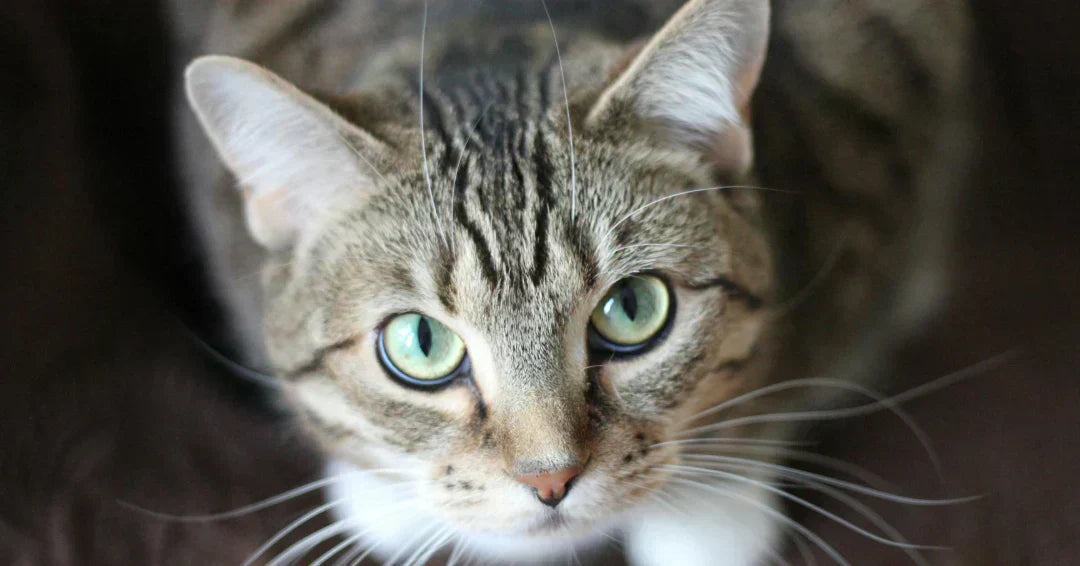Cats are fascinating animals and they are really incredible pets for many reasons. They are self-sufficient when it comes to taking care of business. All pet owners need to do is clean the litter box periodically. Also, they don't tend to overeat, so you can leave them alone for long periods of time by simply leaving out a sufficient food supply and access to water. Kids will love reading all kinds of fun facts about cats and their lifestyle.

Everything Kids Want to Know About Cats
Cats do like to cuddle periodically, but are very independent and don't get anxious when left alone. Children's books about cats give readers a sneak peak at the mischief they cause when their owners go away for awhile. They are very clean animals who take care of their own hygiene by licking away dirt and debris. All of these behaviors are common knowledge amongst cat owners. Here are some other interesting facts about the behavior of cats, including how they communicate and express emotions, for feline-loving kids.
Feline Trivia for Children Who Love Cats
Kids are naturally drawn to animals, and cats are no exception! They're often seen as soft, cuddly, and really cute, which instantly grabs a child's attention. Think about their graceful movements, playful antics, and unique traits like their whiskers and that soothing purr – all these make cats fascinating to little ones. What's more, cats are often a familiar part of a child's world. Many kids grow up with cats as pets, or they see them around every day. This familiarity makes learning about them feel personal and engaging. For kids who have cats, understanding their pet's behavior and needs really strengthens that special bond. And even if they don't have a cat, these animals pop up all the time in children's books, TV shows, and toys, making them relatable characters kids already know and love.

(1) When a cat rubs up against you, it is a sign of affection.
However, there is an ulterior motive that is not so obvious. They are marking you as territory using the scent glands around their face, base of their tails, and paws. Sometimes, though, they are simply showing their affection or looking for some attention.
(2) Whiskers may look pretty cute, but they provide an important sensory aid.
For example, a cat uses its whiskers to determine if it can fit through a small space. The larger the animal, the longer its whiskers. These whiskers are not only on a cat's face, but also on the underside of the lower foreleg. They help a cat navigate safely in the dark. The whiskers bend when they come in contact with a solid objects and signal the cat to avoid collision.
(3) Creme Puff holds a place in the Guinness World Records for the longest living cat.
He was born in 1967 and passed away in 2005, living a whopping 38 years. This mixed tabby lived with his owner in Austin Texas. When asked about the secret to longevity, Jake Perry said that a small serving of red wine was a key factor in the cat's healthy circulation. Also, in addition to dry cat food, the beloved feline was served turkey bacon, eggs, and broccoli from time to time.

(4) Females are capable of producing up to 180 offspring over the course of their entire lives.
A cat can have around 3 litters per year, with each litter delivering an average of 4 kittens. Also, female cats can reproduce for the duration of their lives, which is generally between 12 and 15 years.
(5) About 200 feral cats wander around Disneyland.
They have the important job of keeping the rodent population under control. In return for their services, the Disney staff provide them with food, medical care, and shelter they access through secret cat doors around the park.
(6) Cats have almost 100 different vocalizations to express themselves.
Meowing is a sound these domesticated animals developed to exclusively communicate with people. They purr to engage with humans, looking for any form of attention from stroking to playing. Other common sounds made by cats include hissing or growling, a clear indicator that they are angry, annoyed, or threatened.

(7) If you want to befriend a kitty, never look it directly in the eyes.
If meeting a new cat, you can meet its gaze briefly but then turn your eyes away. They perceive making eye contact with a human (or other animal) as challenging, and may turn aggressive in response to the perceived threat. Some experts suggest blinking slowly while making eye contact as a way to communicate friendliness.
(8) The richest feline in the world was reportedly worth $13 million.
Maria Assunta left her entire fortune to Tomasso when she died in 2011. The widow of an Italian real estate tycoon rescued the cat who became her constant companion. With no children to inherit her multi-million dollar estate, the 94 year old left a sizable portfolio including properties in Rome and Milan. A nurse who had been caring for Assunta, with no knowledge of her wealth, assumed responsibility for ensure the cat was cared for until the end of its life.
(9) The longest domestic cat in history measured 48.5 inches long.
A Maine Coon cat by the name of Mymains Stewart Gilligan, or Stewie for short, has held the Guinness Book Record since he passed away in 2013. The gentle cat spent his free time as a therapy animal visiting seniors in old age homes. He called Nevada home where he was lovingly cared for by Robin Hendrickson. Living just 8 years, the beloved cat succumbed to cancer, but not after touching hundreds of live by both his loving nature and his astronomical length.
(10) Cats spend about 70% of their lives sleeping.
On average, adult cats snooze for 12 to 18 hours daily, and kittens or senior felines might even catch up to 20 hours of shut-eye. Unlike humans, who usually have one long stretch of sleep, cats are polyphasic sleepers. This means they prefer taking numerous short naps throughout the day, often called "catnaps." These brief rests let them recharge while staying sharp and aware of their surroundings. You'll also notice cats often adjust their sleep schedule to their environment and their human companions. For instance, they might sleep more when it's chilly, rainy, or if their humans are not home.
(11) A cat named Stubbs served as honorary mayor of a town in Alaska.
The famed "cat mayor of Alaska" was Stubbs, a beloved feline who held the honorary title in Talkeetna, Alaska, from 1997 until his passing in 2017. His story began in 1997 when Talkeetna residents, reportedly unhappy with the human mayoral candidates, launched a playful write-in campaign for a tailless kitten named Stubbs, who had been discovered in a box by the manager of Nagley's General Store. While Talkeetna is an unincorporated historic district without an official human mayor, Stubbs fully embraced his honorary role.
(12) Cats have an instinctual fascination with boxes.
Cats love all sized boxes— from small shoeboxes to a huge appliance cartons—t hanks to a mix of instinct and practical perks. Think of it this way: in the wild, tiny, enclosed spaces keep them safe from predators and bad weather. A box offers your cat a secure "den" where they feel hidden, in control, and completely safe. They can watch what's happening around them without feeling vulnerable, knowing nothing can sneak up from behind or the sides. This sense of security is especially comforting for cats feeling stressed, anxious, or getting used to a new home.
(13) Urban legend credits Sir Isaac Newton with inventing the cat door.
The story goes that Isaac Newton, while engrossed in his experiments at the University of Cambridge, grew tired of his cat's persistent scratching at the door. To solve this, he supposedly had a carpenter cut a hole in his office door. However, the idea of a "cat hole" is actually much older than Newton. Simple door holes for cats appear in references as far back as the 14th century, even in Geoffrey Chaucer's The Canterbury Tales. Plus, there's a cat access hole at England's Exeter Cathedral dating back to 1598, well before Newton's time. So, what Newton might have contributed, some suggest, was adding a flap or covering to the hole to block drafts or light, bringing us closer to the "modern" cat flap.








